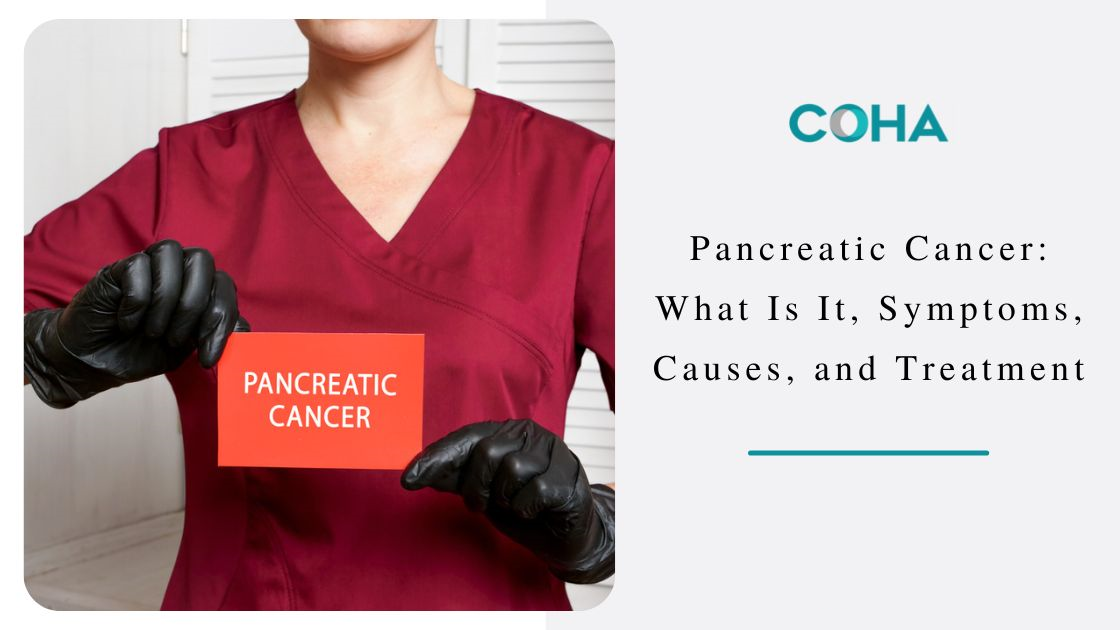


Cancer has been troubling mankind for decades. From head to toe, every body part of ours is vulnerable to large tumor cells. Some of them are rare, some are gender-specific, and others are very common. Among the rare cancers is pancreatic cancer.
Pancreatic cancer is relatively rare, accounting for about 3% of all cancers in the United States, according to research*. However, it is one of the most fatal types of cancer, with a general five-year survival rate being just 11% in the US.
There are several risk factors and symptoms for pancreatic cancer and identifying them at the right time helps you prevent cancer. However, if you are diagnosed with pancreatic cancer, there are various treatment options that can save your life. Let’s discuss all the risk factors, symptoms, and treatment options in detail.
As the name suggests, pancreatic cancer starts in the pancreas, a gland located in the abdomen. The pancreas has two main functions: to produce enzymes that help with digestion and to produce hormones, such as insulin, that help regulate blood sugar levels. Pancreatic cancer affects all these functions and can spread to other body parts in no time, proving to be fatal, if not treated in time.
There are four main types of pancreatic cancer:
Adenocarcinoma: This is the most common type of pancreatic cancer*, accounting for more than 90% of all cases. It begins in the cells that line the ducts of the pancreas.
Neuroendocrine tumors: These tumors begin in the hormone-producing cells of the pancreas.
Sarcomas: These rare tumors begin in the connective tissue or blood vessels of the pancreas.
Pancreatic adenocarcinoma in situ (Pancreatic intraepithelial neoplasia or PanIN): This is a precancerous condition in which abnormal cells are found in the lining of the pancreatic ducts.
There are many possible risk factors for pancreatic cancer. Some of the more well-known risks include smoking, obesity, diabetes, and family history. However, it is important to note that even people who do not have any of these risk factors can still develop pancreatic cancer. This is why it is important to if you have any concerns or symptoms that may be related to pancreatic cancer.
The most common symptom of pancreatic cancer is abdominal pain. Other symptoms may include:
Remember, these symptoms often show up late, and therefore, pancreatic cancer is generally diagnosed at a late stage when cancer has spread to other organs.
Pancreatic cancer usually starts in the cells that line the ducts of the pancreas. These cells are called ductal cells. It can also start in the cells that make up the islets of Langerhans. The islets are clusters of cells in the pancreas that make hormones, such as insulin. From the pancreas, it spreads to other parts of the body, such as the liver, lungs, and bones. When pancreatic cancer spreads to other organs, it is called metastasis.
Pancreatic cancer is serious cancer that can be difficult to treat. It is important to diagnose it early, but often it is not diagnosed until it is already advanced. According to reports, pancreatic cancer has a high mortality rate* accounting for 7% of all cancer deaths. So, it is important to get treatment as soon as possible.
Treatment options for pancreatic cancer include:
Surgery: The most common treatment for pancreatic cancer is surgery. The type of surgery depends on the stage of the cancer.
Partial pancreatectomy: If the cancer is detected early before it has spread, a surgeon may be able to remove the cancerous tumor and some of the healthy tissue around it. This is called a partial pancreatectomy.
Pancreaticoduodenectomy: If cancer has spread to nearby tissues or organs, a surgeon may need to remove part of the pancreas, the stomach, the small intestine, the bile duct, and/or part of the colon. This is called a Whipple procedure or a pancreaticoduodenectomy.
Chemo and radiation therapy: After surgery, some people may need to have chemotherapy or radiation therapy to eliminate any cancer cells that are left in the body.
Related Article: Radiation Therapy for Pancreatic Cancer: Is It a Viable Treatment Option?
We recommend consulting a professional before starting any of these treatments. Furthermore, taking precautions such as avoiding smoking and processed sugar and having regular check-ups can help prevent the disease or at least slow down the advancement of the disease.
If you experience any of the symptoms mentioned above, contact us today for a thorough check-up and diagnosis. Also, if you have a family history of pancreatic cancer, or if you suffer from other risk factors, you can request an appointment at our world-class centers in Anne Arundel County, Howard County, and Queen Anne’s County, Maryland.
At Chesapeake Oncology Hematology Associates, our only objective is to make your life better by creating a personalized and robust treatment plan for all types of cancers.